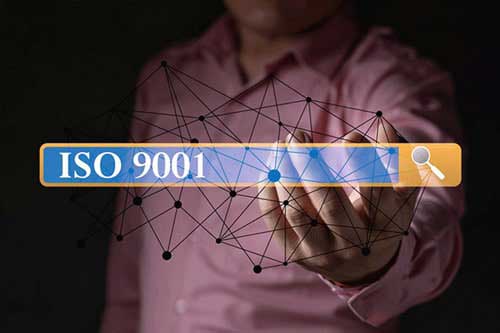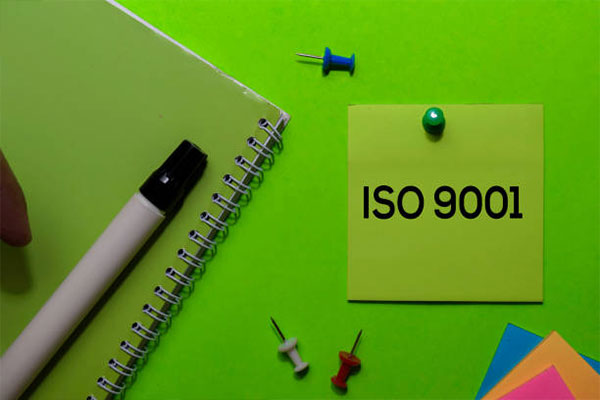ISO 9001 implementation

ISO 9001 implementation Guideline
The affected employees introduced the modified procedures during the ISO 9001 Quality Management System (QMS) implementation phase.
Here, “affected “employees are those individuals who work at the frontline of the QMS and interact with the processes daily.
An exemplary implementation phase helps the affected employees adjust to the improvements in the work processes.
The standard implementation requires virtually all employees to change how they work to some extent. For example, employees need to document their tasks or refer to documents that contain updates.
To ensure the success of your quality management system, employees need incentives to adapt to the new work processes.
To ensure its effectiveness, the QMS must be efficient, user-friendly and non-bureaucratic.
How do I implement the ISO 9001 standard?
For both Small Organisations (SMEs) and large-sized businesses, there are certain factors that you need to consider when implementing your ISO 9001 quality management system.
The ISO 9001 standard is a powerful business tool that creates improvement by streamlining processes, reducing waste and creating clarity about roles.
To fully harness the power of this improvement tool, you need to analyse how your business is managed and identify your strategic goals.
One of the critical factors for the successful implementation of ISO 9001 is the proper engagement of the people.
The engagement of people is essential as the whole business needs to get on board, skill gaps need to be eliminated, and the right people need to be trained to implement ISO 9001 into your organisation effectively.
How to implement a quality management system in eight steps
Step one: Familiarise yourself with the ISO 9001 standard
Purchasing a copy of the ISO 9001 standard and reviewing the key elements is highly recommended.
When planning to implement ISO 9001 into your organisation, it is beneficial to have a tight hold on the standard’s requirements. Such requirements include document, record management, storage, and procedure requirements.
ISO 9001 does not dictate what an organisation should do. Instead, it provides a framework for your core quality management system requirements. The flexibility of this framework allows it to be suitable for all types of businesses.
However, to reap the maximum benefits from this QMS, you will need to understand how the standard’s recommendations apply to your business. The flexible nature of the framework allows you to customise the requirements in a manner that makes sense for your organisation.
Step two: Plan everything out for implementation
It is evident that when a new change is introduced into an organisation, there will be many obstacles. Creating a structured, systematic and organised plan helps make the transition easier.
Planning also involves identifying competent people to implement the modified procedures and creating training programmes to fill skill gaps.
The transition becomes much easier when an organisation has the right people in the job process. Additionally, creating attainable goals ensures success for your business.
Step three: Identify responsibilities, policies and objectives
Creating a good quality policy is integral to maintaining your business’s commitment to meeting objectives and focusing on customer satisfaction.
The quality policy is one of the critical factors that will be utilised to measure your organisation’s progress when determining the success and functionality of your quality management system.
Step four: Develop your documentation
Maintaining records of your quality management system is one of the essential requirements for becoming ISO 9001 certified. Certain documents are mandatory to keep your QMS functional, and others may just help ensure a smooth run.
The preparation of your documents is done following priority, importance and the individual circumstances of your organisation.
Step five: Launch your quality management system
The most significant step in implementing ISO 9001 is launching your quality management system. If the above steps have been done appropriately, you have already done all the work required to set up your business for a successful transition.
All that is left to do is to launch your plan. As soon as you launch your plan by implementing the actionable steps created during the planning stages, you will start to see the changes come into action. Here, you must be mindful to ensure that the processes function as planned.
Step six: Review your performance
After implementing the quality management system, it is time to conduct an internal audit. The perfect time to review your performance is when your quality management system has been set up and running for approximately six months.
During this review, you will help your team to identify any underlying issues and non-conformities. Additionally, you will introduce corrective actions so that everything aligns with ISO 9001.
Step seven: Assess and register for certification
After your quality management system has been running effectively for 3 to 6 months, and all the processes seem stable, it is time to go for registration.
Auditors from a third-party registrar will come and check your QMS for nonconformities and compliance.
Step eight: Continual improvement
One of the core requirements of the ISO 9001 standard is that certified companies should continue showing improvement in the effectiveness of their quality management system.
Your aim should always be to satisfy your customers by identifying areas within your processes that can be improved. Creating and implementing a system that makes continual improvement easy for your team is essential.
Continual improvement can be made easy by following a cyclic four-step process for checking the efficiency of your quality management system.
Tips for implementing ISO 9001
- Acquire commitment and support from senior management.
- Create sound internal communication channels to engage the whole business.
- Analyse and compare your current quality systems with the requirements of ISO 9001.
- Integrate customer and supplier feedback on the existing quality management.
- Establish an implementation team that focuses on implementing the steps identified in the planning stage to enhance the results.
- Map out the entire plan and delegate roles, responsibilities and time scales.
- Adapt the quality management principles of ISO 9001 to your business.
- Enhance staff motivation and involvement with training programmes and incentives.
- Share the recommendations of ISO 9001 to help staff members to train as internal auditors.
- Regularly evaluate your ISO 9001 system to ensure that you continually improve it.
Implement ISO 9001 in the shortest possible time
ISO certification gives your organisation a competitive edge by increasing operational efficiency, reducing waste, and enhancing the consistency of your products or services.
As your customers understand that you have successfully cleared the stringent audit criteria to acquire the ISO 9001 standard, your reputation soars, and your credibility enhances. Due to your enhanced credibility, you can access international markets, acquire new customers and retain satisfied customers. Contact us to begin your certification journey.
FAQ
Frequently asked questions about ISO 9001 implementation
It usually takes 3 to 6 months to implement ISO 9001. But we can implement ISO 9001 from zero to one hundred within a few weeks.
You must learn all the standards necessary to implement ISO 9001. We can help you implement ISO 9001 in the shortest possible time.














